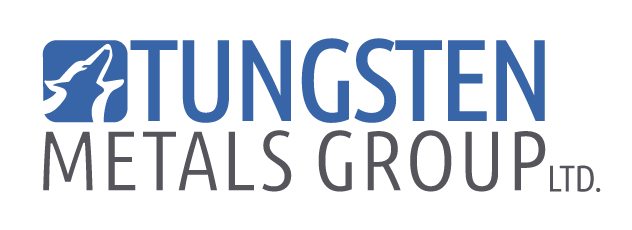DataM Intelligence’s Tungsten Recycling Market Report
The latest DataM Intelligence market report on tungsten-based materials recycling presents key trends and growth drivers that are set to shape the industry's future. Tungsten Metals Group is committed to leveraging these insights to stay ahead of the curve and deliver sustainable value to our investors. Below is a summary of the most significant findings and their implications for our future strategy.
1. Strong Market Growth Driven by Sustainability and Demand for Critical Materials
The tungsten recycling market reached US$ 799.2 million in 2023 and is projected to reach US $1,363.6 million by 2031 at a compound annual growth rate (CAGR) of 7.1% reflecting the increasing demand for sustainable practices across various industries. Sectors such as electronics, automotive, aerospace, and defense are leading this growth as they seek to enhance their environmental credentials while meeting stringent regulatory requirements.
The rising adoption of electric vehicles (EVs), for example, is significantly boosting demand for tungsten, which is used in high-performance components. Similarly, aerospace manufacturers are increasingly turning to recycled tungsten to ensure a secure and sustainable supply chain for critical materials. As these sectors continue to grow, the demand for high-quality recycled tungsten will only accelerate.
For Tungsten Metals Group, these trends validate our strategy towards expanding recycling capabilities in coming years. By focusing on sectors that prioritize sustainability and resource efficiency, we are positioning ourselves to capitalize on emerging opportunities and cater to industries where tungsten's unique properties are indispensable.
2. Technological Advancements: Driving Greater Efficiency in Recycling Processes
The report also highlights the impact of technological innovations on improving tungsten recovery rates, which now exceed 90% in some advanced recycling facilities. Hydrometallurgical processes, which involve chemical leaching to extract tungsten, and pyrometallurgical processes, which use high temperatures to recover the metal, have seen significant improvements in efficiency and cost-effectiveness.
Such advancements not only lower operational costs but also enable the recycling of more complex tungsten-containing products, such as carbide tools and specialized alloys. The ability to process a wider range of end-of-life products is essential in ensuring a steady supply of recycled tungsten to help meet growing market demands and ensure a resilient global tungsten supply chain.
3. Environmental Benefits: Reducing the Carbon Footprint and Energy Consumption
One of the report's key findings is the substantial environmental benefits associated with tungsten recycling. Recycling tungsten can reduce the energy consumption associated with primary production by up to 60%, thereby significantly cutting down on greenhouse gas emissions. This energy efficiency not only supports global efforts to mitigate climate change but also aligns with evolving industry standards that favor sustainable sourcing.
For investors, this presents a clear opportunity to support a business model that generates economic returns while making a positive environmental impact. Tungsten Metals Group is well-positioned to capitalize on this trend, as our plans to focus on furthering sustainable practices strengthens our appeal to customers who prioritize reducing their environmental footprint. Using recycled tungsten as a larger percentage of source material for production, we can offer materials that perform well and contribute to our clients' sustainability goals.
4. Expanding Market Applications: Increasing Versatility of Recycled Tungsten
Another interesting point from the report is the expanding range of applications for recycled tungsten. While traditionally used in hard materials like cutting tools and mining equipment, recycled tungsten is now finding use in emerging areas such as 3D printing and additive manufacturing. The versatility of tungsten in powdered form allows for its incorporation into advanced manufacturing processes, where its properties of hardness, high melting point, and resistance to corrosion are highly valued.
This trend opens up new avenues for Tungsten Metals Group to explore niche markets where recycled tungsten's unique characteristics can provide a competitive advantage. As industries seek materials that offer both performance and sustainability, we are committed to diversifying our product offerings to meet evolving market needs.
5. Policy and Regulatory Drivers: Strengthening the Case for Recycling
The report also emphasizes the role of policy and regulatory changes in driving the tungsten recycling market. With increasing emphasis on circular economy principles, governments worldwide are introducing stricter regulations aimed at reducing waste and promoting the use of recycled materials. For example, the European Union's Waste Framework Directive and other initiatives target higher recycling rates for critical materials, including tungsten.
These regulatory drivers present a favorable environment for future Tungsten Metals Group's recycling initiatives, reinforcing our strategy to expand our recycling operations and integrate them with upstream and downstream processes. By aligning with regulatory requirements and adopting industry best practices, we aim to not only comply with legislation but also gain a competitive edge in securing sustainable supply.
Conclusion
The findings from the tungsten recycling market report underscore the importance of sustainability, technological advancement, and policy support in driving the industry's growth. For Tungsten Metals Group, this represents an opportunity to enhance our leadership in tungsten recycling by focusing on strategic growth sectors, embracing innovative technologies, and meeting the highest environmental standards. As we continue to invest in these areas, we are confident in our ability to deliver sustainable value to our investors and secure a leading position in the evolving market landscape.

